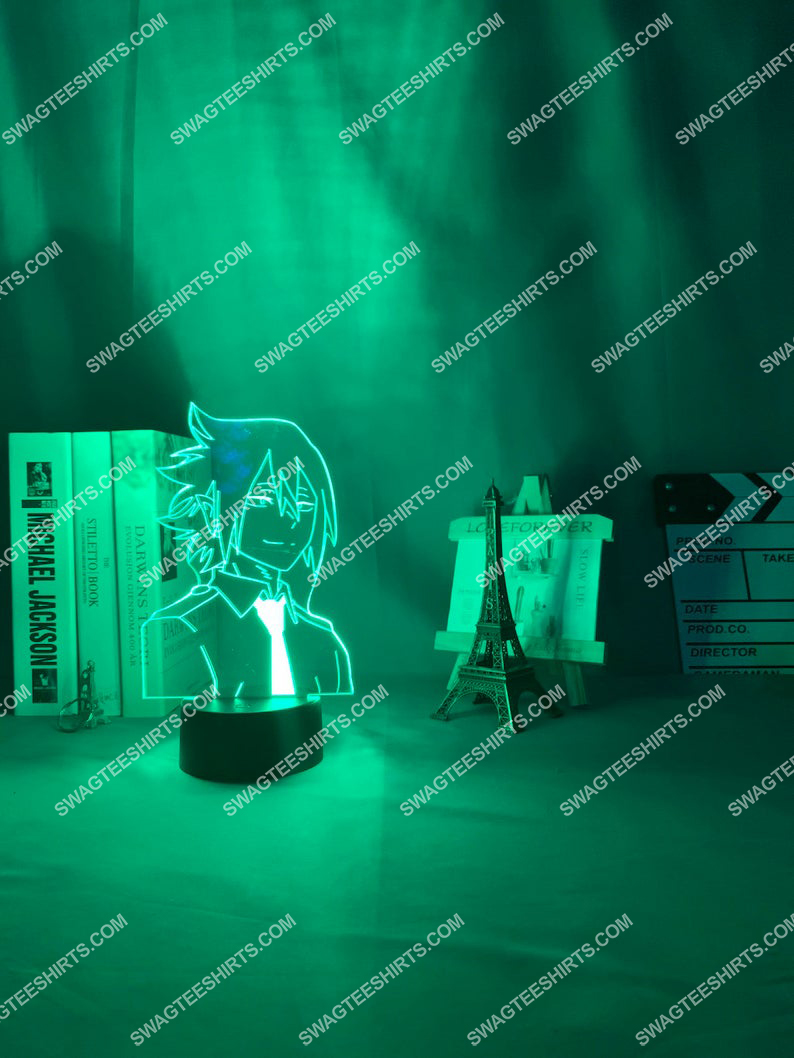Amid the coronavirus pandemi everyone is rightly focused on protecting lives and livelihoods. Can we My hero academia ochako uraraka anime 3d night light led simultaneously strive to avoid the next crisis? The answer is yes if we make greater environmental resiliencecore to our planning for the recovery
My hero academia ochako uraraka anime 3d night light led
stage of the iteration the domestic markets are in equilibrium. Since these steps are taken on a year-by-year basis, a recursive dynamic simulation results. The world food system consists of many actors, some powerful and others dependent. Producers and consumers interact through national and international markets. While there is a trend towards internationalization in the world food system, only ~ of world cereal production currently crosses national borders Fischer . National governments shape the system by imposing regulations and by investments in agricultural research, improvements in infrastructure, and education. Although the system does not guarantee stability nor equity, food and fibre have been produced over time in increasingly efficient ways. My hero academia ochako uraraka anime 3d night light led These efficiencies have generated long-term real declines in prices of major food staples. The aim of this paper is to provide a brief description of the study and an analysis of results obtained from a set of simulation runs carried out with the Basic Linked System of National Agricultural Models Fischer , constructed by the Food and Agriculture Program at
research provided a framework for analysing the world food system, viewing national agricultural systems as embedded in national economies, which in turn interact with each other at the international level. How feasible would this be? The necessary land appears to be available. Mass reforestation has taken place, admittedly at a much smaller scale, in China. And carbon-offset markets could help cata e reforestation . That said, it is difficult to imagine reforestation taking place on the scale or at the pace described in this article absent coordinated government action on top of the shifts described in the scenarios themselves. While reducing CO emissions is a vital part of reaching a .-degree pathway, it would not be enough by itself. Additional carbon dioxide would need to be removed from the atmosphere. Carbon-dioxide removal involves capturing and permanently sequestering CO that has already been emitted, through either nature-based solutions or approaches that rely on technology, which are promising but nascent. Examples of the latter include direct air capture . Developing the nascent carbon capture, use, and storage industry would be critical to remaining on a .-degree pathway. In simplest terms, this suite of technologies collects CO at the source . CCUS would prevent emissions from entering the atmosphere by compressing, transporting, and either storing the carbon dioxide underground or using it as an input for products. Deep decarbonization would also require major initiatives to either capture carbon from the point at which it is generated such as ammonia-production facilities or thermal-power plants or remove carbon dioxide from the atmosphere itself. Currently, it is impossible to chart a .-degree pathway that does not remove CO to offset ongoing emissions. The math simply does not work. It would also entail a massive reduction in coal- and gas-fired power generation. Indeed, to remain on a .-degree pathway, coal-powered electricity generation would need to decrease by nearly percent by in our rapid fossil-fuel-reduction scenario. Even in the scenario where coal and gas generate power for longer, the reduction would need to be about two-thirds by . The sheer scope of this shift cannot be overstated. Coal today accounts for about percent of global power generation. What’s more, by the amount of electricity generated by natural gas would have to decrease by somewhere between and percent. As it stands, nearly one-quarter of the world’s power is generated using natural gas. These shifts would, in turn, prompt a rapid increase in demand for batteries, challenging that industry to scale more quickly and improve its sustainability. In our scenarios, electrification also plays a modest role in decarbonizing marine transport, especially for coastal vessels such as ferries. In aviation, electrification could account for up to percent of the sector’s final energy consumption by and about percent by . Changing the system. The agricultural system itself would need to change, too. Even if consumption of animal protein dropped dramatically, in a .-degree world, the emissions from remaining agricultural production would need to fall as well. and a reduction of other greenhouse gases by roughly percent over that time frame.
Click to buy My hero academia ochako uraraka anime 3d night light led and hope you like
See more in here































Reviews
There are no reviews yet.